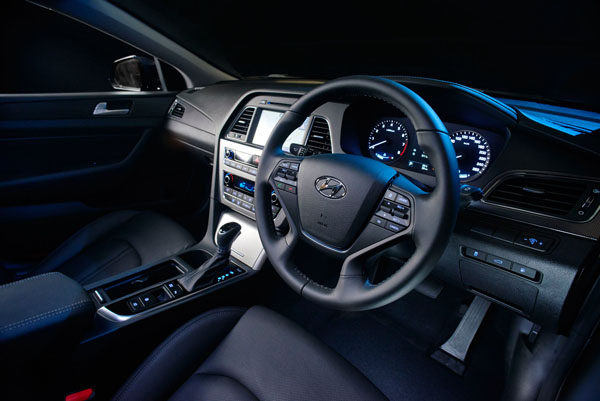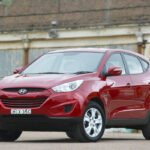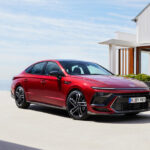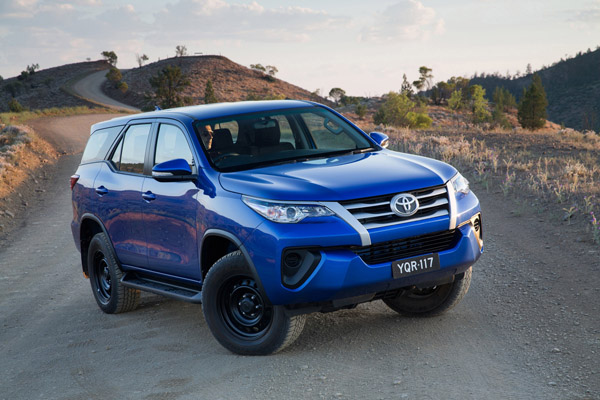It’s okay, it’s okay, hush now – things have changed. Hyundai has dusted off the nameplate it put out to pasture after adorning a series of fairly unspectacular mid-sized sedans, whipping off the covers of a much more attractive and capable car to take on a segment dominated by Toyota’s recently perked-up Camry, with Mazda’s 6 some way behind.
The Sonata joins the i40 (which, oddly, is known as Sonata in the US) in the local range, offering two very different-looking cars in roughly the same segment. Confused? Don’t be. They’re quite different.
VALUE
The new Sonata range is spearheaded by the entry-level Active at $29,990 and topped by the $41,990 Premium. Sandwiched between the two at $36,990 is the Elite that will grace our driveway for the next few months.
Your money buys you a six-speaker stereo with DVD player, Bluetooth and USB, dual-zone climate control, 17-inch alloys, cruise control, sat-nav, electric driver’s seat adjustment, automatic headlights and wipers, keyless entry and start, entirely convincing fake leather seats, front and rear parking sensors with rear view camera, full-size spare.
DESIGN
Hyundai Sonata shares its design language with the very impressive Genesis, with buckets of Germanic influence, which makes sense given the head of design is Peter Schreyer. Finish, particularly the paint, is up there with the Genesis too.
The sharp creases cut through flatter, less curvy sheetmetal than the rest of its stablemates and the gentle arc of the roofline has a lot of Audi A5 in it, ending in a short deck. The boot itself is gigantic and as you work your way forward, space is a recurring theme.
The rear seat has limo-like space if not a particularly luxurious bench seat, but three adults will fit side by side, with plenty of legroom but not a lot of personal hip space.
The distinctive headlights and daytime running lights give Hyundai Sonata a strong new face, along with the corporate Hyundai grille. It’s an assured design and is as subtly detailed as any Hyundai. We’ve gotten used to the Korean company’s offerings looking good, now we’re starting to see a real maturity with this new direction.
Inside isn’t quite as assured as the exterior. The dash structure is a bit of a cliff and again draws on the interior design of the Genesis. It doesn’t hang together as well as the exterior, but the materials are good with mostly good fit.
As the youngest member of the family continues to test the upper limits of every rear seat that arrives on the driveway, it’s nice to get in and not hear complaints from the rear seat about legroom.
SAFETY
The Sonata lands with six airbags, ABS, brake assist, traction and stability controls and scored five ANCAP stars.
INFOTAINMENT
Hyundai’s software boffins have been a bit hit and miss over the years. The better examples tend to be found in the lower, Active models where there’s less ambition. It all works, but sometimes it doesn’t activate after having to agree not to crash while using it. It sometimes forgets to find your phone and, embarrassingly, there’s a few typos.
ENGINE / TRANSMISSION
The Sonata is powered by the company’s own Theta II four-cylinder turbo. It’s a strong unit with 180 Kw (!) of power and 350 Nm of torque. It’s mated to the Korean company’s own six-speed automatic.
Sadly, it’s missing stop-start which is starting to look more unfortunate as more and more companies use this emission reducing system. The claimed fuel consumption on the combined cycle is 9.2 litres per 100km and as we’re still running it in, we’re seeing 10.9 L/100km, which isn’t bad considering the outputs. It’s slowly sinking, but without that stop-start, it’s unlikely to get too much lower. We’ll see.
DRIVING
We’ve been most impressed with the Sonata straight off the bat. The first impression is one of impressive refinement. Some of Hyundai’s petrol engines have a habit of sounding a little coarse under load but this one barely makes a peep, even when revving.
The transmission has always been a good one, and handles the duties of moving the 1645 kg Sonata about.
There’s also been a huge improvement in the driving dynamics. A rigorous program by the Australian suspension team has seen the Sonata’s road manners elevated above the usual tunes we used to have to put up with.
While this isn’t a hard-riding sportster, an excellent balance has been struck between comfort, grip and control. It probably rolls a little more than the keen driver would like but it’s an immensely comfortable and quiet car to tackle the morning commute.
One black mark, almost literally, are the headlights. They are so meek we have to keep checking they’ve been turned on. It’s a great pity they’re like this because Hyundai headlights are generally good.
Other details that have been sorted are the stability and traction controls. Again, older Hyundais chopped the power to the wheels as soon as any slip was detected, sometimes hanging you out to dry. Turning off the traction control became part of the startup routine because it was too vicious. The new Sonata is a lot more finessed, with a little bit of slip allowed before a gentle intervention.
The traction control stays on even when there’s some fun to be had (there has so far been little opportunity) but we’ve certainly come to enjoy having 180 kW underfoot, noticing some mild torque steer when booted.
SUMMING UP 3.5/5
Minor niggles aside, it’s been a great start with our new car. The neighbours, while used to the parade of metal on the driveway have taken a keen interest, asking which Audi it is. Imagine their surprise when they’re told it’s a Hyundai.
LIKES: Strong engine, great looks, huge space
DISLIKES: Unfinished infotainment system, no stop-start, headlight strength














